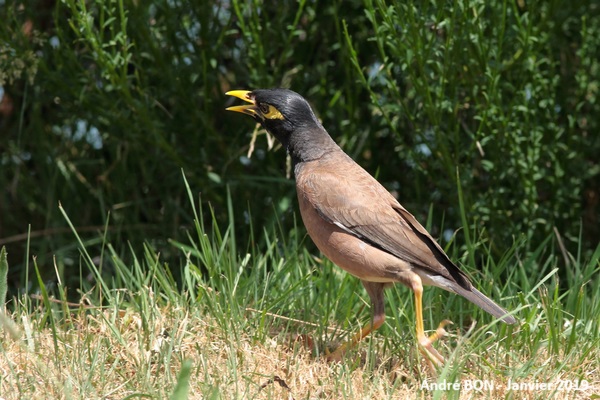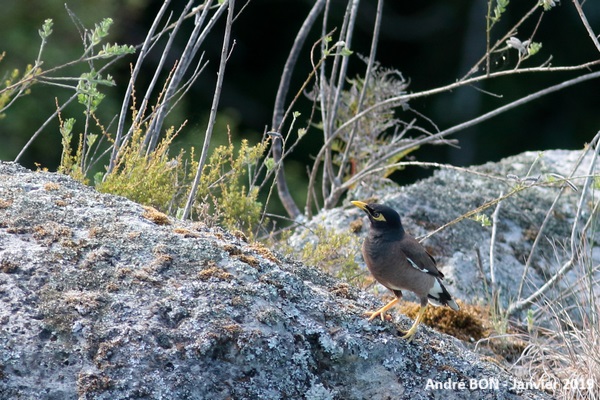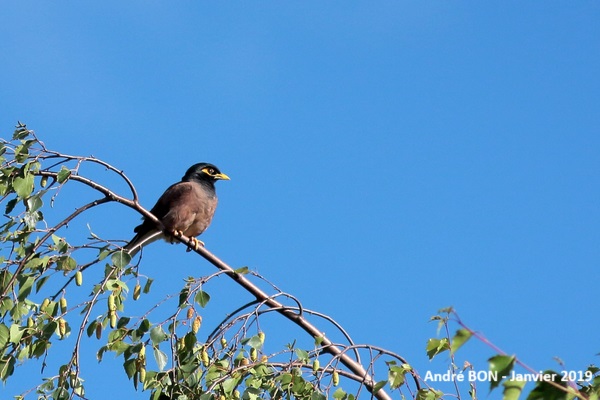


| Common Myna (Acridotheres tristis (Linnaeus, 1766)) |



|
|
Scientific name: Acridotheres tristis (Linnaeus, 1766) Common name: Common Myna Other names: Indian Myna French name: Martin triste, Merle des Moluques. Order: Passeriformes Family: Sturnidae Size: Body size: 23 to 26 cm; Weight: 82 to 143 g; Wingspan: 120 to 142 cm. Habitat: Open agricultural areas, outskirts of towns, open dry forests, missing in densely forested areas. Food: Fruits, insects and other invertebrates, eggs, chicks. Nesting: The nest is often placed in a cavity in a tree, rock or building. There can be 2 clutches of 1 to 5 eggs per year. Migration: Sedentary. Geographic area: South and southeast Asia westward to Uzbekistan. Introduced to many countries and regions including Australia, New Zealand, French Polynesia, New Caledonia, South Africa, Hawaii, South Florida, Israel, United Arab Emirates, Qatar, Mauritius, Reunion, Madagascar and Mayotte. |
The Common Myna has a shiny blackish coloured head and neck. The bill and legs are yellow as well as an area of bare skin located behind the eye. The back and belly are chocolate brown. The wings are a little darker with a white mark on the primary flight feathers. The tail is blackish with white tip. The lower belly and undertail feathers are white. There is no sexual dimorphism. Juveniles are duller in colour. Common Mynas live in small colonies and sometimes gather in large flocks in the evening. |
| [To know more about the Common Myna] [Next picture] [Top] |

|
This Common Myna, seen on the bank of the lake in Taupo, is certainly in search of some food forgotten by walkers. |
| [To know more about the Common Myna] [Next picture] [Previous picture] [Top] |

|
Having not succeeded well in my photos of a Common Myna in flight above the waterfalls, we will content ourselves with a bird landed on the ground. |
| [To know more about the Common Myna] [Previous picture] [Top] |

|
I did not observe flocks but only isolated birds. |